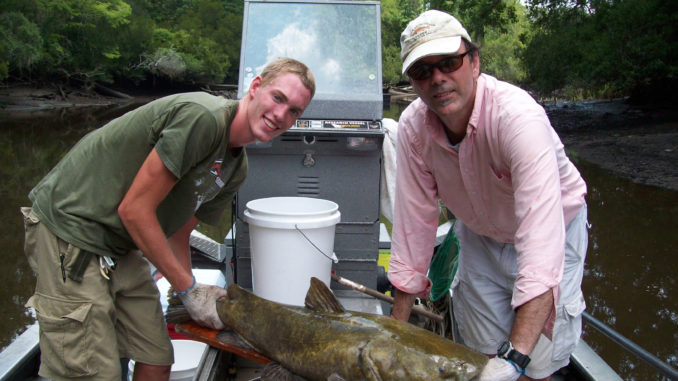
Of fisheries stock assessments, catfish surveys tend to fall farther down the list than other popular species such as black bass, stripers and crappie. One of the reasons is the difficulty in determining how many catfish live in a specific body of water.
“In a normal stock survey, we use two primary methods: electroshocking and basket nets,” said biologist Lawrence Dorsey of the N.C. Wildlife Resources Commission, who covers much of the Yadkin/Pee Dee system: “While both of these methods will work for catfish, they are not ideal. A more-effective method would be either gill-netting or long-lining using floating bottles. One of our graduate students had pretty good success in her studies using the bottles.”
Presently, no catfish surveys are taking place in Piedmont rivers or reservoirs, so biologists don’t know much about any population trends. One thing they do understand is that the number of anglers who choose to target catfish has risen dramatically over the past decade. This is evidenced by the number of tournaments and increased participation in catfish-only angler activities. Unfortunately, the state’s catfish program has been slow to keep pace.
“Our catfish program is inching along,” Dorsey said. “We have no reason to believe there is a concern over any decline. Over time, we hope to know more about what we have in both our reservoirs and rivers in terms of catfish populations and the balance between those fish and our other native gamefish species.”





Be the first to comment